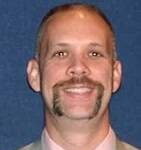This column originated with a request from Columbus businessman Buck Ritz. He was seeking help in finding a photo of three men he had worked with throughout a long career in construction — Fritz Kiel, John Spangler and Dennis “Denny” King.
All three headed construction companies in their lifetimes. Fritz was president of Repp and Mundt Inc., John headed Milestone Contractors LP (formerly Contractors United) and Denny was president and owner of Dunlap & Co.
Buck worked on occasion with Fritz and Denny. For a good share of his career he worked for John. His search for the photo was primarily personal and was triggered in large part by Fritz’s death last month, a passing that closed the book on Buck’s relationships with the three men. Denny died in 2011, and John in 2003.
It also had broader implications. In some respects it marked a generational change in the story of how Columbus, once branded as the Athens of the Prairie, has evolved from a sleepy Midwestern town into an architectural showpiece.
Credit for that transformation often goes to the world-class architects who designed the structures that placed Columbus sixth on the list of cities across the nation recognized for architectural excellence and J. Irwin Miller, the philanthropist and community leader who was the chief benefactor in establishing a renowned architectural program.
While that recognition is certainly deserved, the contributions of another group integral to the overall process have been relegated to an “also participating” category: the people who built those structures. It took an Indianapolis architect to set the record straight and give some credit where it was due.
Steve Risting does not live in Columbus, but his fingerprints are all over the city — from St. Bartholomew Catholic Church to The Commons and The Cole apartment building. He’s also a cheerleader for the city and its architecture, which was a prime factor in his selection to update the Columbus Area Visitors Center’s book, “A Look at Modern Architecture” in 2013.
He made several additions to the original script, but one of the most meaningful was a listing of the contractors on the city’s most significant buildings. The addition was not entirely his idea. It originated in a conversation between Harold Force, co-owner of Force Construction, and Lynn Lucas, former director of the visitors center, who passed the concept on to Steve.
The suggestion did more than add a section to a publication. It also provided him with insights into Columbus’ design culture that had not been explored to any great extent — the role of the builders in the process, in particular the ones who lived in Columbus.
“It’s important to recognize that these people are invested in the community,” Steve said in a recent interview. “As such they know the community and have a pretty good idea of what’s wanted and what’s possible.”
That kind of background knowledge or institutional memory is central to winning contracts, but it’s also coupled with an appreciation of the overall goal to achieve architectural excellence.
“Through the years these contractors have come to understand the value of design excellence,” he said. “More importantly, they understand how to achieve that within a budget.”
In some respects, the design excellence that has come to characterize Columbus is based in large part on a small town environment in which everybody knows everybody, especially in the construction business. Important to that relationship has been the ability of architects and contractors to work together, sometimes with the help of middlemen.
In recent years that role has been filled by Harold Hatter, the former architectural design director for Cummins Inc. “Hat,” as he’s known to most people around town, is part of the city’s generational evolution. His role as the “middleman” had previously been held by Tommy Harrison, a Bartholomew County native who served as an early mentor.
“Tommy really set the example for the unique assignment he was given,” recalled retired Cummins executive Randy Tucker. “He certainly had the local contacts, but he also developed strong relationships with the architects after they were selected for projects. He and his wife entertained them in their home and in many ways acquainted them with Columbus.”
That asset was passed on to his understudy, Harold.
“Harold was able to speak the language of both the builder and the designer,” recalled Buck. “That was even more valuable when you consider that he was often working with local contractors and knew who to talk to and what to ask for.”
That kind of innate knowledge was developed over a period of several decades, starting in the boom years of the city’s design process in the 1960s. In some respects, local contractors had to adjust their way of thinking through their work with young architects from other locales who were chosen in part by the promise they demonstrated for future recognition.
In some respects Fritz Kiel, John Spangler and Denny King are the second generation of Columbus builders who had progressed through this unique relationship.
David Doup, who spans the first two generations and can be acknowledged as a member of the current group of involved contractors, recalled some of those who set the stages for the start of the city’s architectural rebirth.
Chief among those first-generation builders were individuals such as Jerry Dunlap and John Kinnaman of Dunlap; Willis Repp and Alvin Mundt of Repp and Mundt; Virgil Taylor of Taylor Bros.; and Don Force of Force Construction.
All of these men were to one degree or another deeply involved in creating the architectural models in the 1960s and ’70s that set the stage for future designs and intense working relationships with architects familiar with Columbus only by reputation.
“Don Force, for instance, was not directly involved with the building construction but was considered a ‘ground guy’ who prepared the area for the project,” David said. “In a lot of ways he had to employ a great deal of creativity in that process.”
Don was the father of Harold and David Force, who can be considered second-generation members in the group of contractors who helped make Columbus different, not only by design but by the manner in which its structures were constructed.
Just as they inherited and benefited from their predecessors, Fritz Kiel, John Spangler, Denny King and others have passed on the examples of community involvement to a third generation of local contractors.
As for the group photo of the three men Buck was seeking, a search of the newspaper’s archives came up blank. He acknowledges that the image might exist only in his mind. It involves only three men who were part of a much larger group spanning a half century of building excellence in Columbus.
In my book they all deserve equal recognition with the individuals who designed the structures they made real.
Harry McCawley is the former associate editor of The Republic. He can be reached at [email protected].




